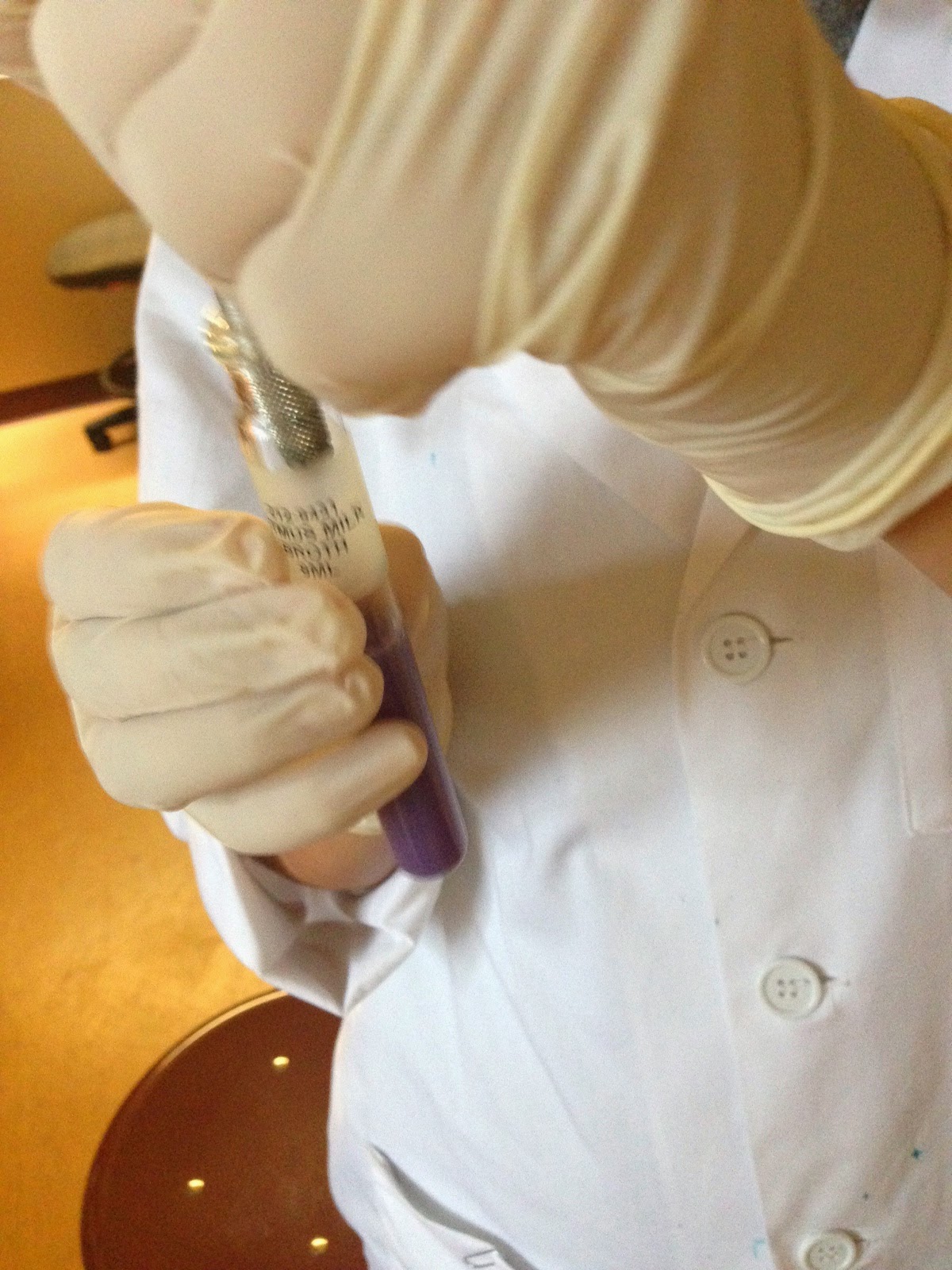Lab Day 10
We checked our results from the day
before, our lab group samples.
Nasal Swab on the Mannitol Salt Plate:
There was growth on the plate however,
there was no yellow coloration on the plate. Therefore there was no
MRSA present in the sample.
Throat Swab on the Blood Agar Plate:
There was beta-hemolysis on the blood
agar plate, meaning that there was Staphylococcus present. However,
we placed a bacitracin tablet on the plate to check if it is Group A
or Group B Staph.
Urine Sample on the EMB Plate:
There was no growth on the plate
therefore there is no E. coli in the the sample that we collected.
Then we wanted to check to see if our
bacteria was resistant or non resistant to specific antibiotics.
We placed 5 tablets into a plate of our
specimen:
P: 7mm in diameter,
Neomycin: 15mm in diameter,
intermediate
Cinnamon Oil: 25 mm
Tetracycline: 20mm very sensitive to
Pro sysnthesis
Augmentin: 23mm very affective
Lemon Oil: didn't wok at all
Real Time PCR- sero conversion- present
antibodies against antigens
We completed an Antibody-Antigen Reaction in Agar exercise, and we Tested for Food Purity.
We completed an Antibody-Antigen Reaction in Agar exercise, and we Tested for Food Purity.
Joanna Dawyot, Cassie Livingston, Mary Rose Capara
DisclaimerAll content provided on this blog is representation of the blog owner and not FranciscanUniversity of Steubenville. The information on this site is purely used for education purpose. The owner of this blog makes no representations as to the accuracy or completeness of any information on this site or found by following any link on this site. The owner will not be liable for any errors or omissions in this information nor for the availability of this information. The owner will not be liable for any losses, injuries, or damages from the display or use of this information. Privacy The owner of this blog does not share personal information with third-parties nor does the owner store information is collected about your visit for use other than to analyze content performance through the use of cookies, which you can turn off at anytime by modifying your Internet
browser’s settings. The owner is not responsible for the republishing of the content found on this
blog on other Web sites or media without permission.Blog CommentsThe owner of this blog reserves the right to edit or delete any comments submitted to this blog without notice due to;1. Comments deemed to be spam or questionable spam2. Comments including profanity3. Comments containing language or concepts that could be deemed offensive4. Comments that attack a person individuallyThis policy is subject to change at anytime.





















































